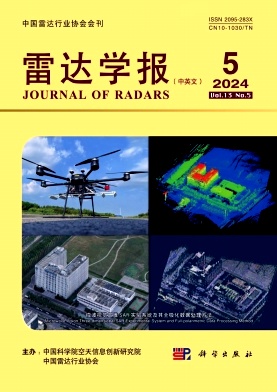基于GPU的SAR数据处理高效算法
Q2 Physics and Astronomy
引用次数: 0
摘要
在合成孔径雷达(SAR)领域,数据处理非常耗时。图形处理单元(Graphics Processing Units, gpu)具有强大的浮点运算能力和极高的内存带宽,而计算统一设备架构(Compute Unified Device Architecture, CUDA)技术的发展使gpu能够应用于通用的并行计算。本文提出了一种利用图形处理器处理SAR数据的新方法。与传统的基于GPU的SAR处理方法相比,将cpu与GPU之间的数据传输次数从4次减少到1次,并充分利用cpu与GPU的同步协作。采用该方法可将数据处理速度提高2.3倍,并通过模拟SAR数据进行了验证。本文章由计算机程序翻译,如有差异,请以英文原文为准。
Efficient Algorithm for Processing SAR Data Based on GPU
Data processing is time-consuming in the field of Synthetic Aperture Radar (SAR). Graphics Processing Units (GPUs) have tremendous float-point computational ability and a very high memory bandwidth, and the developing Compute Unified Device Architecture (CUDA) technology has enabled the application of GPUs to general-purpose parallel computing. A new method for processing SAR data using GPUs is presented in this paper. Compared with the nominal GPU-based SAR processing method, the number of data transfers between the CPUs and a GPU is reduced from 4 to 1, and the CPUs are exploited to cooperate with the GPU synchronously. By using the proposed method, we can speed up the data processing by 2.3 times, which is verified by the testing with simulated SAR data.
求助全文
通过发布文献求助,成功后即可免费获取论文全文。
去求助
来源期刊

雷达学报
Physics and Astronomy-Instrumentation
CiteScore
4.10
自引率
0.00%
发文量
882
期刊介绍:
Journal of Radars was founded in 2012 by the Institute of Space and Astronautical Information Innovation of the Chinese Academy of Sciences (formerly the Institute of Electronics) and the China Radar Industry Association (CRIA), which is located in the high-end academic journal and academic exchange platform in the field of radar, and is committed to promoting and leading the scientific and technological development in the field of radar. The journal can publish Chinese papers and English papers, and is now a bimonthly journal.
Journal of Radars focuses on theory, originality and foresight, and its scope of coverage mainly includes: radar theory and system, radar signal and data processing technology, radar imaging technology, radar identification and application technology.
Journal of Radars has been included in domestic core journals and foreign Scopus, Ei and other databases, and was selected as ‘China's high-quality science and technology journals’, and ranked the first in the category of electronic technology and communication technology in the ‘Chinese Core Journals List (2023 Edition)’.
 求助内容:
求助内容: 应助结果提醒方式:
应助结果提醒方式:


